When world-renowned artist and UC Davis Professor Emeritus Wayne Thiebaud added a few more of his paintings to the university collection in 2016, the building that would be the university’s first art museum — the Jan Shrem and Maria Manetti Shrem Museum of Art — was still under construction.
Amid the rumble of heavy equipment and pounding hammers on a 106-degree day, he said he never really thought he would witness a museum being built where he started teaching in the 1960s. Nor did he think his work, which is exhibited around the world, would be displayed there.
“No, I had imagined we’d get a Quonset hut way back in the sticks that no one would ever see.” Instead, the museum is located at a prime gateway to campus, he noted. “I’m very touched.”
A “Quonset hut” is where art at UC Davis more or less began, though. And art is still made there every day.


Many in the UC Davis art community view Temporary Building 9, or TB 9, a metal structure at Old Davis Road and Hutchison Drive constructed from old military surplus materials, as the main creative space on campus since the 1960s, when the art department grew there. The building, which has served as a police station, post office and food sciences area, is where Thiebaud and many of his lifelong friends and colleagues — the first-generation art faculty at the university’s first art department — created a place to work.
There, the group assembled as a “team of rivals” by founding art department chair Richard Nelson, including Thiebaud, Robert Arneson, William Wiley, Roland Petersen, Roy De Forest, Tio Giambruni and Manuel Neri, among others, freely made art in a 24-hour environment away from the distractions of the main campus and the rest of the world. Former students and faculty alike, many of them now internationally known artists, reminisce about the magical space that gave birth to the first-generation faculty and later-famous artists. They also reminisce about the heat — when summer days, along with the kilns and fiery foundry are rumored to have brought the temperatures to 120 degrees.
A modest building of national significance
Air conditioning, and heat, only came to the two main teaching studios in 2003, and to the individual studios in 2018-19. The same year that the Manetti Shrem Museum opened, in 2016, the building gained recognition for its importance in art history with its inclusion on the National Register of Historic Places and the California Register of Historical Resources.
It has always been known as a place where artists can freely create.
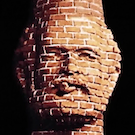
Video: Robert Arneson on the seductiveness of clay
The San Francisco Museum of Modern Art interviews Robert Arneson about why many of his works contain full handprints (0:52s).
Arneson, creator of the “Eggheads,” and other UC Davis first-generation art faculty are among those associated with the California Funk and the Figurative movements of the mid-century. Arneson, often dubbed the father of the ceramic Funk movement, is most associated with TB 9, which housed the university’s ceramics facilities as well as other studios. He taught at UC Davis from 1962 until the year before his death in 1992. In the 1960s, when the art department began, two-thirds of the building held the art space and foundry, while food science and the post office occupied the rest of the building, according to artists who worked there. The artists eventually took over the whole place. The metal shell, with an outer garden and patio full of sculptures, looks much the same today.
Birthplace of an art movement
One of the last students to work under Arneson before his death was protégé Kathy Butterly, a nationally known artist whose own first retrospective exhibition will be shown at the Manetti Shrem Museum this summer. It accompanies Landscape Without Boundaries an exhibition that features, among others, art from the museum collection by Arneson, Thiebaud and Wiley.
The Kathy Butterly/ColorForm exhibition travels through Butterly’s entire career with dozens of her sculptures and drawings, with an emphasis on the past 10 years. It is a homecoming of sorts, bringing Butterly back to the site of her MFA and to the Northern California region that has been so generative for ceramic art for a half-century.

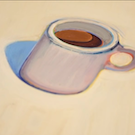
Video: Art in the University of California collection
The University of California houses an incredible diversity of museums, libraries and other collections. Some are small and eclectic; others are recognized as world-class. Many are open to the public, and all are cared for by passionate curators, historians and scholars. Take a behind-the-scenes peek at UC’s incredible collections.
“This was really the birthplace of a movement of art,” said Butterly, who now operates out of a living-working studio in New York. “And I was so excited to be here to study,” adding that all her student colleagues felt “these were the best two years of our lives.”
In Arneson, she found a kindred spirit. Arneson, who used TB 9 as his primary studio, which he once said was key to his effectiveness as a teacher, would go to great lengths to help his students. He often spent hours with them, in the studio, and over wine, beer and food tried to help them be better artists by feeding their souls and their stomachs.
“All we talked about was art, day and night, and we worked all the time, 24 hours a day,” remembered Butterly. “You wanted to be in his presence. He was so smart and so gifted.”
“All we talked about was art, day and night, and we worked all the time, 24 hours a day.” —Kathy Butterly
Arneson’s sons recall the same freely creative environment, whether it was throwing clay balls at each other in the studio, being able to put their handprints in his work (permanently) or explaining to their friends the presence of their father’s sculptured “johns,” or toilets, in their living room at their house in Davis. The toilets represent Arneson’s one-up on the original infamous art toilet, Fountain, by Marcel Duchamp.
They remember a Dodge van — often used to transport art and clay — parked in their driveway. Its vanity license plate read: “TB 9.” His students often came over to barbecues, and even babysat the four boys, explained Kirk Arneson, the youngest of the sons and one of five of Arneson’s children, who now lives in Benicia.
Kreg Arneson, the second-oldest son, remembers a story where his father once destroyed a now-prominent alumna artist’s work.
“He wanted her to do better. He knew she could do better; he wasn’t trying to be mean,” said Kreg, who strongly resembles the photos and self-portrait sculptures of his father. “And, she is the best artist to ever come out of here.”
Butterly recalls that Arneson’s influence was great, and she only now realizes she has adopted some of his habits, right down to listening to public radio when she makes art. This lends itself, she said, to some of the political art she creates, including a piece that will be in the summer exhibition called “November 9th,” which refers to the election of President Donald Trump. “It had been brightly colored. Then, after the election, I covered the piece in black,” while leaving, she added, pink arms and a pearl necklace still visible.
On a recent visit to TB 9, she said she felt the same presence of both greatness and raw creativity that she felt as a grad student in the 90s. “We worked with these great artists. We never, never, took that privilege for granted.”

Free-wheeling ’60s
Arthur Schade, a Bay Area artist whose sculptures have been displayed at the Manetti Shrem Museum (“1990 Twin Falls” sits at the museum’s main entrance) was in the first group of people to earn an MFA in 1969. “It was a fun and free-wheeling place,” he remembered, where he and others sometimes stayed all day and night working on projects. “It was a dirty, messy place. It was great.”
The faculty were not much older than the students, and they all had a special camaraderie, added Sandy Shannonhouse, the widow of Arneson who is now married to Schade.
Schade remembers working one summer day in 118-degree heat helping the late professor Tio Giambruni at the foundry. “It was so hot. I lost seven pounds in one day,” he said.
Shannonhouse, a sculptor who studied art at UC Davis as an undergraduate and has two of her works on display in the museum’s courtyard, said there has been a long-held joke about the heat and lack of air circulation in the metal-encased building, considered by some a “hothouse of creativity.” The kiln room still emits a lot of heat, but the remaining rooms are comfortable even on a warm Davis day.
“I think that someone finally figured out that the chickens on campus had air conditioning, but not the art building,” she quipped.
A place from the past, for the present
Today, not all students know the history of the place. But they can feel it.
When one walks into TB 9, a message on a chalkboard reads: “Welcome to TB 9. Happy Creating.”

“We have the freedom to create here,” said Julia Pierce, 20, in her third year as a student. A design major and studio art minor, Pierce recently took her third class at TB 9 in the spring quarter, creating a 5-foot tall clay sculpture for a class assignment. The sculpture area is down the way from a long hallway at the building’s entrance containing floor-to-ceiling, tightly packed, framed photos of hundreds of students and faculty from previous years. The gallery starts to the left of the entrance, with a single photo of Arneson and one of his many, now-famous sculptures of his own head.
Professor Annabeth Rosen, a nationally known and accomplished ceramic sculptor, carries on much of the tradition there, taking photos of student artists, alumni and visitors to display on the walls in a makeshift gallery of memories. She teaches and creates much of her work in a studio at TB 9, just as Arneson did, immersing herself in the work with the students some days, paint and clay spotted about on her skin, hair and clothes.
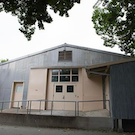
Historical Highlights of the UC Davis Department of Art and TB 9, 1958-76
In 2016, the Quonset hut known as TB 9, on the UC Davis campus, was nationally recognized for its importance in art history with its inclusion on the National Register of Historic Places and the California Register of Historical Resources.
Officially, she has held the Department of Art and Art History’s Robert Arneson Endowed Chair since 1997. Unofficially, if TB 9 were a city, she would be the mayor, and she mentors its citizens. She has put together a TB 9 “manual” with hundreds of pages of recipes and procedures for making color and blending clay to get the desired results. The clay the students use is in the inexpensive, raw form coming from Lincoln, California. Students must mix, pound and form the clay they need for creating.
“This way, all students, regardless of income or means, have access to the material,” explained Rosen. “They can work to the limits of their imaginations, and then beyond that.”
This is how it’s always been at TB 9.


On a recent day, 22 students in the intermediate ceramics class taught by lecturer and alumna Elisabeth Higgins O’Connor had only a few days to complete and load their projects into kilns for firing. Some were further along than others. While some students were throwing clay on tables for their sculptures, others were mixing pigments. Still more students, in a side room, were tossing hunks of a 3,000-pound clay mountain into a mixing machine. The “recipes” required for making the clay were taped on the adjacent door by Rosen. The machines they use to mix look much like cement mixers.
In the studio, the students’ art took many forms. Jacqueline Arroyo, 21, is a microbiology major who ended up minoring in art studio. On a recent day, she was creating three-dimensional puzzles, about 18-inches square. “I had never been exposed to art, but this was a welcoming place,” she said, adding that she would be spending many hours in the next few days in TB 9 finishing her pieces. Apparently taken with the whimsey of the place, she specifically designed the puzzle pieces so that they never would fit together.
“We welcome everyone. UC Davis is a place of very smart, creative, accomplished, very good students. I always say, if you are a good student, you are a good art student.” —Annabeth Rosen
Rosen said it’s not unusual for students from various majors to end up at TB 9. They might take one class, or three, or even progress to a minor or a major.
“We welcome everyone,” she stressed. “UC Davis is a place of very smart, creative, accomplished, very good students. I always say, if you are a good student, you are a good art student.”
Rosen herself came to UC Davis from the east coast to experience California’s rich ceramics history. She arrived here after Arneson had died. Previously, she knew of him, but met him only once. “Little did I know … I’d be here.”
She said she feels fortunate to be at Davis.
“If you do contemporary ceramics, you come to California,” she said. “It all began here.”


From student to artist to educator
Jessica Wimbley, who earned her MFA in 2005, now works as director of museum education at the Manetti Shrem Museum, the second alumna artist to hold that post. She pursued her graduate education here specifically because of the history of the art scene at UC Davis.
“I fell in love with the campus,” said Wimbley, who had spent her undergrad years at Rhode Island School of Design as a painting major where everything, she explained, “was a little more serious.
“I loved Arneson’s Eggheads — the whimsey and humor of the whole place; the West Coast playfulness. I loved the tone of something fresh in the air. It really resonated with me.”
She felt lucky to have the opportunity to work in TB 9 as a graduate student.
Wimbley now works in photography and multimedia, as well, and was honored to have one of her works displayed at the museum in an exhibition, Dimensions of Black — which showed 30 works by some of the most celebrated African American artists of the past three decades.
She also facilitates creation in the museum’s own space, The Carol and Gerry Parker Art Studio. It is a space where on specific days and times the public, faculty, non-art major students, community members and whole families can experience an open art studio to create. It’s the only space of its kind in a university museum, a glassed-in studio viewable from the museum’s main lobby and accessible from the outer doors.
“I loved Arneson’s Eggheads — the whimsey and humor of the whole place; the West Coast playfulness.” —Jessica Wimbley
A journey back to where it started
Wimbley thinks the accessibility and freedom to create has carried through from the days Shannonhouse, Schade and Butterly describe.
“Working here, now, at the Manetti Shrem Museum and experiencing TB 9 when I was a student, I get to be part of history,” she said.
Rosen sees the experiences students have every day. “TB 9 is an example of the power of place to inspire. The space in TB 9 is inherently, in the very nature of its openness, its equipment and staff support — is unparalleled — no one ever forgets their time spent working here. It is a reminder of the importance space and light is to creative work, in all disciplines.”
“For artists it is an environment with the sense that anything can happen, it is an experience that stays for a lifetime.”
Butterly, who is pictured among the hundreds on the wall of TB 9 while pregnant with her first child, said TB 9 and her UC Davis experience represent a very important part of her life — both then and now.
Exhibiting her work at the museum feels special to her. Her art work has been shown in museums and galleries all over the world, but this “is like the family calling me back home.”
“This is a total 360,” she said. “I’m giving back to a place that gave me so much.”

Media contact: Karen Nikos-Rose, News and Media Relations, UC Davis, 530-219-5472, kmnikos@ucdavis.edu
Related Stories
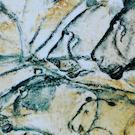
Neanderthals’ Lack of Drawing Ability May Relate to Hunting Techniques
Neanderthals had large brains and made complex tools but never demonstrated the ability to draw recognizable images, unlike early modern humans who created vivid renderings of animals and other figures on rocks and cave walls.
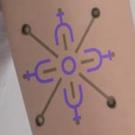
LAURELS: Katia Vega Shares Award for Biomedical Tattoos
Katia Vega, an associate professor of design, has taken her “beauty technology” a step farther to create biomedical tattoos — a project that earned an Interactive Innovation Award at South by Southwest 2018.
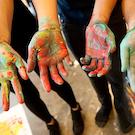
6 Ways to Find a Fulfilling Career for Art Graduate Students
Graduates of arts programs are often considered to be more creative and insightful than many of their peers, but would you believe they’re also among the happiest professionals? Believe it. Arts alumni aren't just surviving in today’s workforce, they’re thriving.
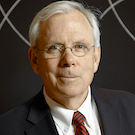
The Art Connection
As an artist, Jock Reynolds' works have been exhibited throughout the world. Here, Reynolds discusses his new book with UC Davis Magazine contributing writer Karen Nikos-Rose.
